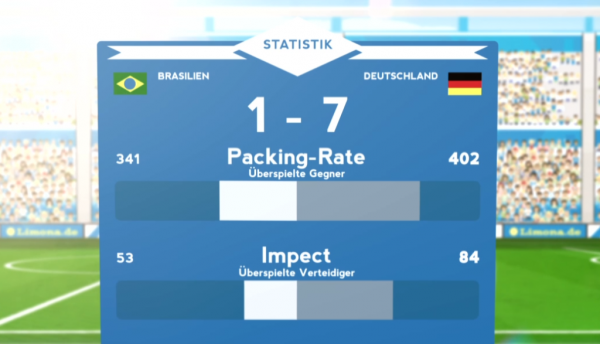
In the never ending attempt to turn Analytics into something effective and definitive in determining a winner in a soccer match, comes the work of Stefan Reinartz, a former Bundesliga midfielder, who came up with a system to measure the effectiveness of passing in a match, named “packing”.
So what is packing? A way to determine the number of opponents taken out of a play by a pass. He and his former teammate Jens Hegeler realized that the more common statistical numbers like passing, possession and one on ones are quite ineffective when trying to determine a winner, or trying to understand why a team won. Their innovation has become quite a trendy way to measure matches, used by analysts at Borussia Dortmund, Leverkusen and the German FA as well as by German state broadcaster ARD, who used it as an on-screen metric during Euro 2016.

Out of 51 matches in Euro 2016, in 34 of them the team with the higher packing rate won the match. Only three matches had the team with the higher packing rate lose. According to Reinartz, there’s nothing surprising about those numbers.
The correlation between getting the ball past opponents and winning is between 0.3 and 0.4, with one being a 100 percent correlation. If you then drill down into the numbers of defenders that were taken out, the correlation rises to 0.6, which is statistically very significant.
Maybe even more important than finding out who can win matches, is determining which players are responsible for high packing numbers. Toni Kroos finished first in the tournament with 82 opponents taken out each game (on average) thanks to his passes, while Granit Xhaka, the €45 million man Arsenal signed from Borussia Mönchengladbach, finished fifth, with an average of 55 opponents per match, maybe explaning what Arsene Wenger saw in him.
Our numbers for the Bundesliga show that Xhaka was the second-best holding midfielder after Xabi Alonso in the league, too, when it comes to verticality. Bayern Munich centre-back Jerome Boateng was the best player in Germany in 2015/16, taking out 75 players on average per game thanks to his excellent passing from the back.

The system helps identify the players who are great recipients in helping taking out defenders from plays. Graziano Pelle was the best target man in the tournament, while Mesut Ozil was also quite a surprising player to find on the top of the target man rankings. He’s known for his passing, but his off the ball movement is often overlooked. Antoine Griezmann, the best player in the tournament, had the fifth-best stats for playing/going past defenders and was also among the 10 best vertical pass collectors.
England can be seen as an example for failure: In their round of 16 loss to Iceland, they managed to produce passes that beat only 28 Icelandic players throughout the 90 minutes. The Icelandic side managed to beat 41 with their passes. Germany struggled with the same thing in the semifinal, beating only 21 players, struggling to defend.
Like every analytical tool in every spot, it isn’t perfect, but in soccer/football, which has always been slow or closed to less common measurements, packing could be almost revolutionary in how players are valued, and how matches are looked at, once it becomes a much more popular tool to help determine who is playing better football, instead of just relying on possession and shots on goal from 35 meters.
